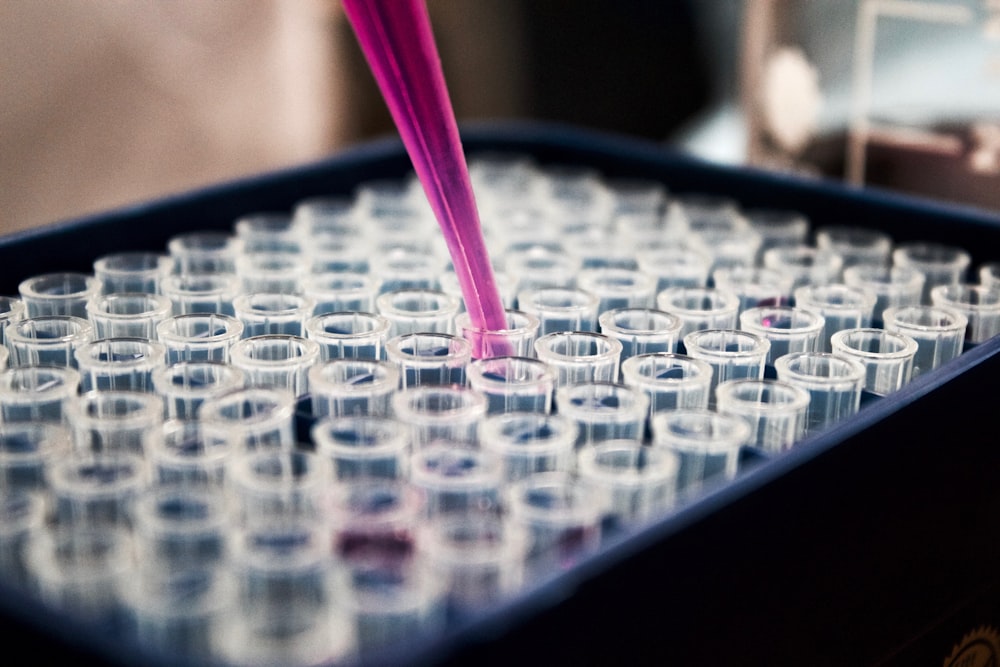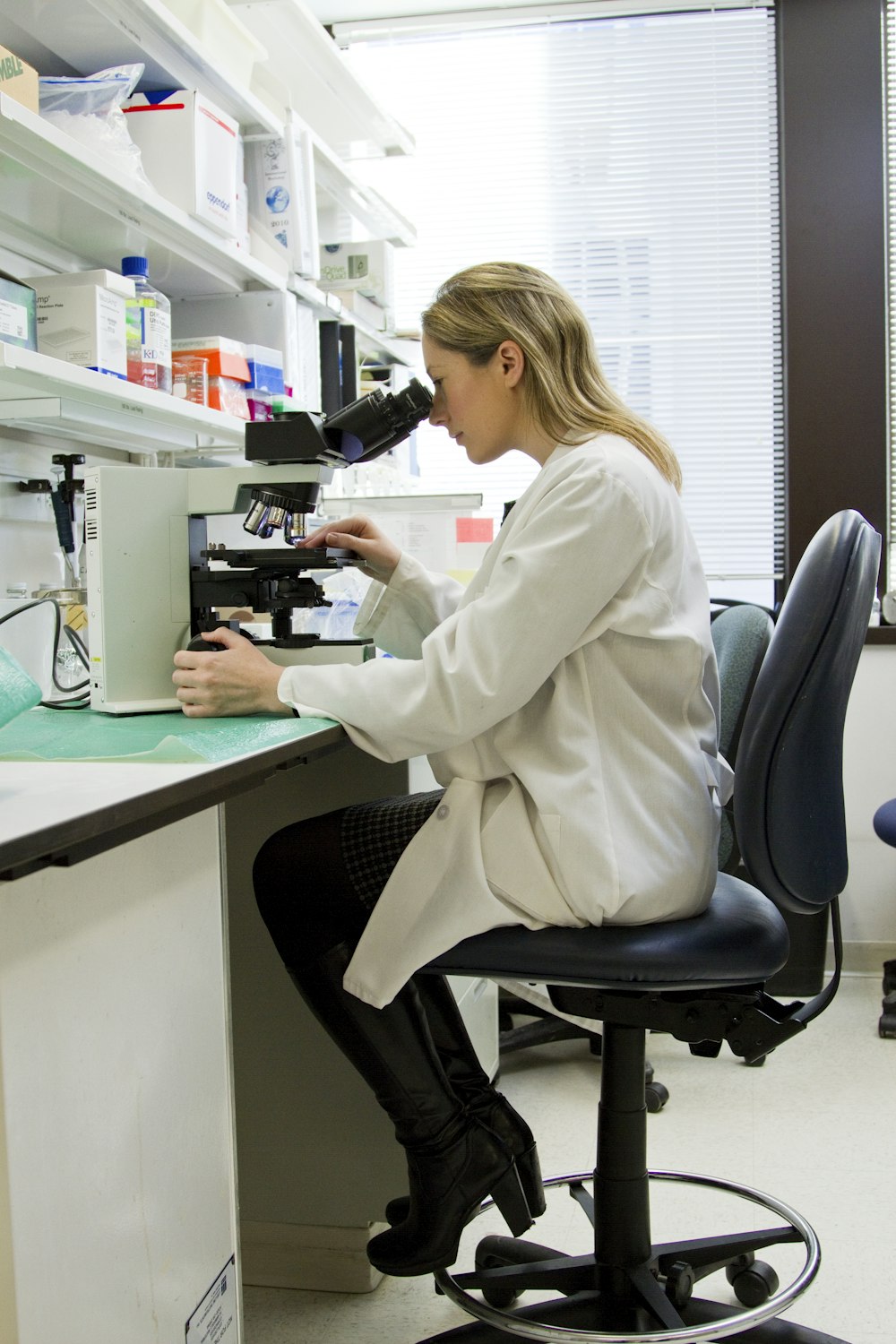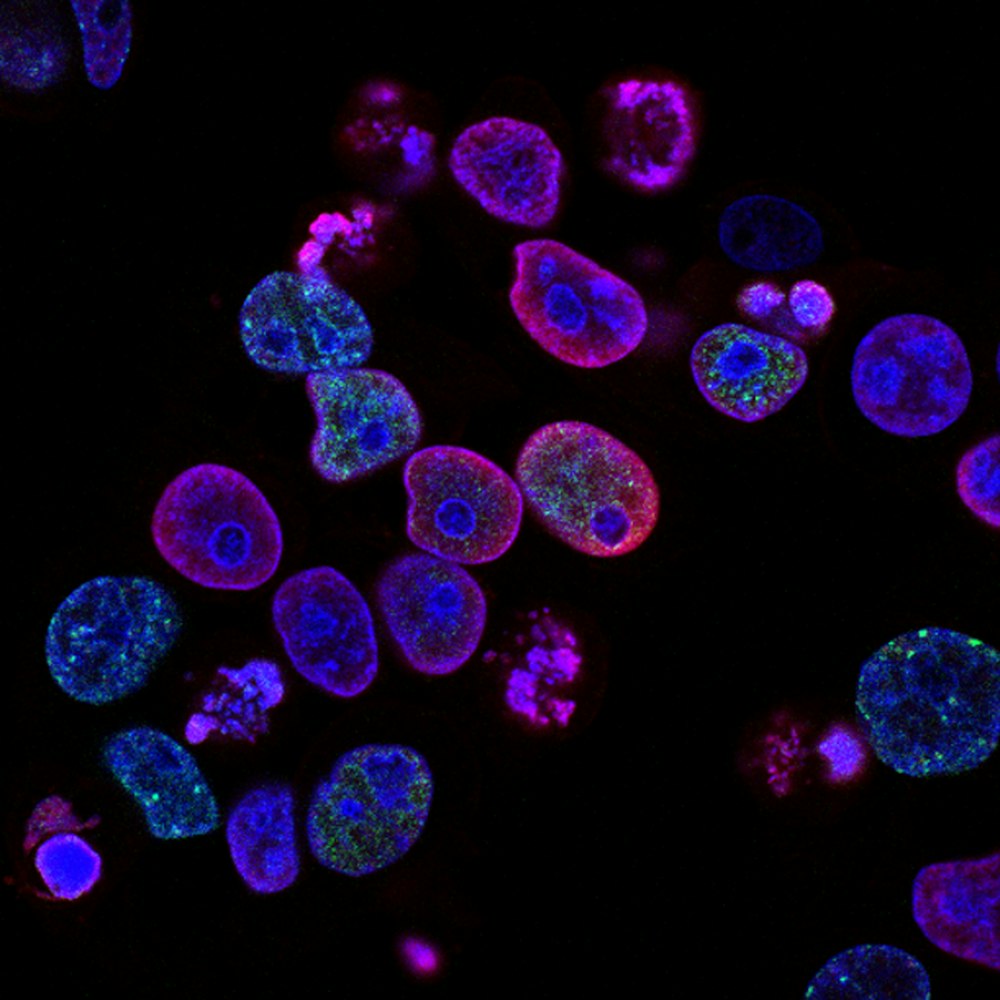OSW-1 and Its New Analogues: Nature's Blueprint for Next-Generation Cancer Therapy
Exploring the groundbreaking research on OSW-1 analogues and their potential as targeted cancer therapies with enhanced potency and selectivity.
Introduction
In the relentless fight against cancer, scientists often turn to nature's intricate molecular designs for inspiration and innovation. For decades, chemotherapy has been a cornerstone of cancer treatment, yet its severe side effects and the emergence of drug resistance remain significant challenges.
The quest for compounds that can selectively eliminate cancer cells while sparing healthy tissues represents one of the most pressing pursuits in modern oncology.
Emerging from the bulbs of an unassuming ornamental plant lies a molecule of extraordinary potency—OSW-1. This natural compound, discovered decades ago, exhibits cancer-fighting properties up to 100 times more powerful than conventional chemotherapy drugs. Recent breakthroughs in synthesizing new analogues of OSW-1 are pushing the boundaries of what's possible in targeted cancer therapy, offering a promising glimpse into the future of oncological treatment.
Enhanced Potency
New analogues show up to 40-fold increased activity compared to previous compounds.
Targeted Action
OSW-1 demonstrates selective toxicity toward cancer cells over healthy cells.
Natural Origin
Derived from the Ornithogalum saundersiae plant with traditional medicinal use.
The Source of Hope: Unveiling OSW-1's Extraordinary Power
OSW-1 is a steroidal saponin—a natural product characterized by its complex structure combining a steroid backbone with sugar molecules—first isolated in 1992 from the bulbs of Ornithogalum saundersiae, a perennial plant native to southern Africa known for its striking white flowers 2 .
In Chinese folk medicine, this plant had been traditionally used for its anti-inflammatory and antitumor properties, but the specific compound responsible for its biological activity remained unidentified until the 1990s 2 .

Key Discovery
What makes OSW-1 truly remarkable is its exceptional potency. Research has demonstrated that OSW-1 exhibits powerful cytotoxic effects against various cancer cell lines at concentrations in the nanomolar range (as low as 0.25-0.78 nM for some leukemia cells), making it approximately 10-100 times more potent than commonly used chemotherapeutic agents like doxorubicin, camptothecin, and paclitaxel 2 4 .
Perhaps even more importantly, OSW-1 demonstrates a favorable selectivity profile—its IC50 against normal cells is significantly higher (40-150 fold) than against malignant cells, suggesting it can target cancer cells while causing minimal damage to healthy tissues 2 .
The mechanism behind OSW-1's anticancer activity involves targeting specific cellular proteins. Studies indicate that OSW-1 acts as a specific antagonist of oxysterol-binding protein (OSBP) and OSBP-related protein 4 (ORP4) 4 . These proteins play crucial roles in lipid metabolism and cellular signaling, and cancer cells often exploit them for growth and survival. By disrupting these pathways, OSW-1 triggers a cascade of events leading to programmed cell death (apoptosis) in malignant cells 5 .
Designing Superior Molecules: The Science of OSW-1 Analogues
The extremely low acquisition rate of OSW-1 through traditional extraction methods from its natural plant source, combined with the complexity of its chemical structure, initially limited comprehensive research into its clinical potential 2 . This challenge prompted scientists to explore chemical synthesis as a means to produce OSW-1 and its derivatives in sufficient quantities for extensive study.
Molecular Structure Components
The structure of OSW-1 can be divided into two main components:
- The cholestane aglycon (the steroid-like core structure)
- The disaccharide moiety (the two-sugar unit attached to the core) 2
Researchers have systematically modified different parts of the molecule to understand which structural elements are essential for its anticancer activity, creating what's known as structure-activity relationships (SAR).

Breakthrough Discovery
In 2019, a significant breakthrough emerged with the development of OSW-1 analogues featuring 2-acylamino xylose residues 1 . This particular modification to the sugar component of the molecule proved to be a game-changer—many of these new analogues demonstrated up to 40-fold increased antitumor activity compared to SBF-1 (a closely related compound), making them among the most potent versions of this molecule ever created 1 .
The research also confirmed that the (1→3)-disaccharide linkage (a specific connection between the sugar units) is crucial to maintaining this enhanced activity 1 .
A Closer Look at a Key Experiment: Probing the Power of New Analogues
To truly appreciate the scientific advancement represented by these new OSW-1 analogues, let's examine the pivotal 2019 study that demonstrated their remarkable efficacy.
Methodology: Building a Better Molecule
Researchers synthesized a library of 38 different C22-ester analogues of OSW-1, all containing the novel 2-acylamino xylose residues 1 . This systematic approach allowed for direct comparison of how different chemical modifications affect anticancer activity.
The synthesis involved sophisticated chemical coupling techniques to join the modified sugar components with the aglycon core structure.
To evaluate the effectiveness of these new compounds, the research team conducted comprehensive antiproliferative assays—standardized tests that measure a compound's ability to inhibit cancer cell growth. These tests were performed against multiple cancer cell lines, allowing researchers to identify which structural modifications yielded the most potent compounds across different cancer types.

Experimental Breakthrough
Among the library of new analogues, one particularly promising probe (compound 3) was identified that contained both photoactivatable and clickable residues 1 . These specialized chemical features enable future research to precisely determine the compound's location within cells and identify its specific molecular targets, addressing a long-standing question in OSW-1 research.
Results and Analysis: A Dramatic Enhancement of Potency
The experimental results were striking. The introduction of 2-acylamino xylose residues resulted in analogues with dramatically increased anticancer activity—up to 40 times more potent than previous related compounds like SBF-1 1 . This represents one of the most significant improvements in OSW-1 potency reported to date.
The research also provided crucial insights into structure-activity relationships. Scientists confirmed that the (1→3)-disaccharide linkage between the sugar units is essential for maintaining the compound's powerful biological activity 1 . This finding provides valuable guidance for future drug design efforts, indicating which structural elements must be preserved when creating new derivatives.
Comparison of OSW-1 with Conventional Chemotherapy Drugs
| Compound | Approximate Potency (nM) | Selectivity for Cancer Cells | Clinical Status |
|---|---|---|---|
| OSW-1 | 0.25-27 nM (varies by cell line) | 40-150x higher for malignant vs. normal cells | Research phase |
| Doxorubicin | ~10-100x less potent than OSW-1 | Lower selectivity | Approved, widely used |
| Paclitaxel | ~10-100x less potent than OSW-1 | Lower selectivity | Approved, widely used |
| Camptothecin | ~10-100x less potent than OSW-1 | Lower selectivity | Approved, widely used |
The Cellular Journey of OSW-1: How It Targets Cancer Cells
Understanding how OSW-1 operates within cancer cells reveals why it's such a promising therapeutic candidate. Using a specially designed fluorescent analog of OSW-1, researchers have tracked its cellular journey and determined that it is rapidly internalized into cells and primarily localizes in the endoplasmic reticulum and Golgi apparatus 3 . These organelles play crucial roles in protein synthesis, modification, and transport, suggesting that OSW-1 may disrupt these fundamental cellular processes in cancer cells.
Mechanism of Action
Once inside cancer cells, OSW-1 triggers the intrinsic apoptotic pathway—the cell's built-in suicide program 5 . This process involves several key steps:
1. Increase in cellular calcium levels
Disruption of calcium signaling serves as an early trigger for apoptosis .
2. Change in mitochondrial membrane potential
The mitochondria—the powerhouses of the cell—become compromised .
3. Disruption of mitochondrial morphology
The physical structure of mitochondria becomes damaged.
4. Release of cytochrome c
This critical protein escapes from mitochondria into the cell cytoplasm .
5. Activation of caspase-3
The initiation of this enzyme cascade leads to controlled cell dismantling .

Why This Mechanism Matters
This mechanism is particularly effective against cancer cells because they often have dysregulated apoptosis pathways, allowing them to survive and proliferate uncontrollably. By reactivating these pathways, OSW-1 effectively eliminates malignant cells.
Key Steps in OSW-1 Induced Apoptosis
| Step | Process | Experimental Evidence |
|---|---|---|
| 1 | Cellular calcium increase | Measured by flow cytometry with Calcium Green™-1 AM dye |
| 2 | Mitochondrial membrane potential change | Detected using specialized fluorescent probes |
| 3 | Cytochrome c release | Confirmed by western blot analysis of mitochondrial and cytosolic fractions |
| 4 | Caspase-3 activation | Measured using antibodies against cleaved-caspase-3 via flow cytometry |
| 5 | DNA fragmentation | Visualized through TUNEL assay showing characteristic DNA breaks |
The Scientist's Toolkit: Essential Research Reagents
Studying complex molecules like OSW-1 and its analogues requires specialized tools and techniques. Here are some key components of the research toolkit that enable scientists to explore the potential of these compounds:
OSW-1 Reference Standard
The benchmark compound isolated from Ornithogalum saundersiae, used as a reference point for evaluating the potency of new analogues. Available from specialized chemical suppliers with purity typically >95% 4 .
Fluorescent OSW-1 Analog
A modified version of OSW-1 containing a fluorescent tag that allows researchers to track its cellular uptake and localization using fluorescence microscopy. Studies using this tool revealed OSW-1's primary localization in the endoplasmic reticulum and Golgi apparatus 3 .
Synthetic OSW-1 Analogues
A library of 38 modified compounds designed to enhance potency and understand structure-activity relationships. These represent the cutting edge in OSW-1 research 1 .
Cancer Cell Panels
Collections of different cancer cell lines (e.g., HL-60 leukemia, HeLa cervical cancer, MCF-7 breast cancer) used for comprehensive testing of compound efficacy across various cancer types 4 .
Apoptosis Detection Kits
Reagents including Annexin V-FITC/propidium iodide for flow cytometry and TUNEL assay kits to quantify programmed cell death .
Animal Model Systems
Typically nude mice inoculated with human cancer cells (e.g., LoVo colon carcinoma) for evaluating in vivo efficacy and potential side effects .
Research Tool Utilization in OSW-1 Studies
The Future of a Powerful Molecule
The development of new OSW-1 analogues bearing 2-acylamino xylose residues represents a significant milestone in the journey from traditional medicine to modern targeted therapy. These advances demonstrate how chemical synthesis and rational drug design can enhance nature's blueprints to create even more potent and selective anticancer agents.
Current Challenges
Understanding precise molecular targets
Optimizing drug delivery systems
Scaling up production for clinical trials
Comprehensive toxicity profiling

Future Directions
While challenges remain, the future of OSW-1 research appears promising. The creation of analogues with photoactivatable and clickable residues opens new avenues for identifying how these compounds interact with cellular components 1 . Furthermore, the demonstrated ability to synthesize OSW-1 on a gram scale using improved methods suggests that production limitations may be overcome 2 .
As research continues to unravel the mysteries of this potent compound and its enhanced analogues, we move closer to potentially adding a powerful new weapon to our anticancer arsenal—one that combines the wisdom of traditional medicine with the precision of modern chemical design. The story of OSW-1 serves as a powerful reminder that sometimes, the most advanced medical solutions can be found by looking to the natural world and applying innovative thinking to nature's timeless molecular designs.
Natural Origin
Derived from traditional medicinal plant
Scientific Innovation
Enhanced through rational drug design
Therapeutic Promise
Potential for targeted cancer therapy